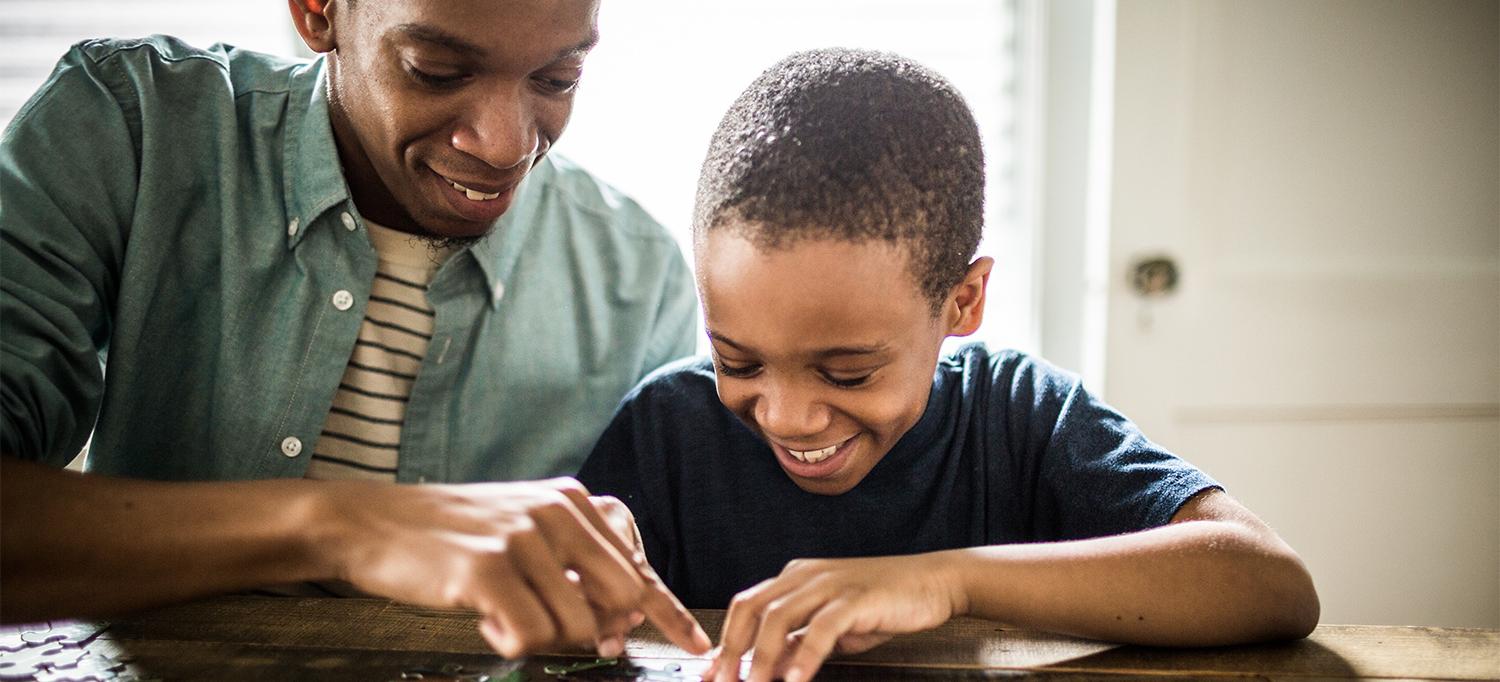
Photo: MoMo Productions/Getty
During the 2019 coronavirus disease (COVID-19) pandemic, parents of young children are coping with shuttered daycare centers and nursery schools, furloughed nannies and babysitters, extended family caregivers who have been urged to keep their distance, and school-aged siblings who are now home all day.
Experts from NYU Langone’s Child Study Center, together with the WonderLab at the Department of Child and Adolescent Psychiatry, offer parents ways to participate in their child’s development while spending much more time together at home.
The Benefits of Positive Attention
“Our current circumstances also pose challenges to the development and wellbeing of young children, including reduced structure and stimulation, increased family stress, disrupted routines, little to no opportunities with age mates, and for many families, increased screen time while caregivers fulfill other responsibilities,” says Timothy L. Verduin, PhD, clinical assistant professor in the Department of Child and Adolescent Psychiatry. “This strain shows in the behavior of young children, with many parents reporting increased defiance, regressed behaviors, aggression, sleep disruption, and frequent tantrums in their little ones.”
Yet the current crisis also presents an opportunity for parents to focus on and participate more in their young children’s development. “It may be more accurate to say we are spending more time around our children, rather than with them,” Dr. Verduin says. “To understand this distinction, and the benefits of the latter over the former, we can look to research on parent–child relationships and attachment, as well as clinical programs for disruptive behavior in young children.”
This research, Dr. Verduin says, shows that young children are highly motivated by their parents’ attention and will change their behavior to seek it. “Children prefer praise, warmth, and other forms of positive attention when they can get it. When they can’t, children whine, act out, and provoke negative reactions from caregivers,” Dr. Verduin says. “This is why nearly every evidence-based behavior management program recommends giving positive attention to desirable behavior and ignoring most undesirable behavior.”
Make Time for Playtime
Spending time following your child’s lead in play not only improves behavior, it also strengthens the relationship between parents and kids. While adding another task to your new normal stay-at-home routine may seem daunting, there is both immediate and long-term payoff.
“Spending a few minutes in a special time playing with your young child will help both of you feel good about each other,” says Stephanie M. Wagner, PhD, clinical assistant professor in the Department of Child and Adolescent Psychiatry. “This positive energy helps offset the frustration and annoyances that inevitably come up from spending all this time at home while juggling many roles. You will likely notice changes in your child including being more affectionate with you, cooperating with your requests, and having fewer tantrums.” There is even evidence that attending to the play of young children helps them develop language, attention, and social skills, Dr. Wagner adds.
When you spend time in child-led play, you are teaching your young child about concepts including letters and numbers, providing rich language input to build vocabulary, and showing how to be a good friend by being a role model for sharing, turn-taking, and cooperating. “You are giving space needed to learn from the environment, problem solve, and be creative,” Dr. Wagner says. “These skills are best taught face-to-face rather than through online meetings, shows, and apps.”
Parent–Child Play Skills
When it comes to connecting with your toddler through play, there are several skills and considerations to maximize quality time, says Dylann Gold, PhD, clinical assistant professor in the Department of Child and Adolescent Psychiatry.
Let Your Child Be the Boss
Small children are often shuffled around throughout the day—along for the ride and bound by grown-up schedules and limits. But play is a great opportunity for your toddler to take control. “Follow your child’s lead—join him on the floor and play what he’s playing,” says Dr. Gold. “You may model advanced play skills by describing what you’re doing or expanding upon the task, but avoid taking charge or indicating disapproval of your child’s choices in the play.”
Keep It Positive
Toddlers learn to navigate the world by soaking up feedback from their environment. While it is important for parents to say “no” and provide correctives when necessary, play is a great time to focus on your child’s neutral or positive behaviors. “Praise, such as saying ‘good sharing the blocks,’ and positive touch, such as a rub on the back, can go a long way,” Dr. Gold says. “Not only does this promote your child’s skill development, it also enhances the parent–child bond and makes for more positive behavior moving forward. For example, a dose of positive play now can ease bath time struggles later on.”
Build Play into Your Routine
Make playtime with your toddler part of your family’s daily routine. Establishing new habits is easiest when we make a concrete commitment and create a plan. “Start by finding a regular time that works for everyone—one that will allow you to maintain a single focus,” Dr. Gold says. “Also, try to avoid times of day when your child tends to be cranky.”
Next, consider the setting and toys. Choose a space that is free of extra stimulation like TV and noisy siblings. Set up a few creative toys like blocks or play food, steering clear of those that could be messy or promote rough play, such as paints or plastic swords. “Forethought here will minimize the likelihood of negative play interactions while still providing your child with choices,” Dr. Gold says.
Make Play Short and Sweet
“Believe it or not, research suggests that only five minutes of daily play is enough to make an impact,” Dr. Gold says. “Quality time is most valuable when it is time limited. When the play is too extended, it becomes harder for parents to maintain the required level of undivided focus.”
Children can also become bored, tired, or hungry, making it more likely that the interaction will go south. “Keeping the play to five minutes maximizes the likelihood that everyone will be at their best and ensures that it will be a concentrated dose of quality time, as intended,” Dr. Gold says.
More Resources for Parents
Childhood specialists at the Perinatal and Early Childhood Mental Health Service—part of the Child Study Center—provide services to families with young children ages 5 and under to help intervene early to keep development on track. Clinicians provide parent–child interaction therapy (PCIT), a research-supported intervention to treat problematic relational challenges and disruptive behaviors in children ages 2 to 7. The service also offers a toddler version of PCIT that is developmentally geared toward younger children, with a focus on improving emotion regulation, building listening skills, reducing problematic behaviors, and establishing and maintaining healthy attachment.
In light of COVID-19, the Child Study Center offers these programs through virtual visits. The virtual format is also supported by research and shown to be as effective as in-person care.
Additionally, Dr. Verduin, Dr. Wagner, and Dr. Gold recommend the following resources for parents:
- Center on the Social and Emotional Foundations for Early Learning: Family Tools Resources
- Zero to Three: Social and Emotional Development Resources
- Zero to Three: Tips on Helping Your Child Build Relationships

